Customer Support Quality Assurance Framework [2025 Guide]

![Customer Support Quality Assurance Framework [2025 Guide]](https://s3.us-east-2.amazonaws.com/assets.yourgpt.ai/content/uploads/2025/07/09164431/support-QA.png)
It was the same Monday shift.
Two agents sat three desks apart, following the same script, same tone guide, same product notes.
At 10:42 AM, one helped a customer renew their plan and even upgrade to a higher tier by explaining its value clearly. At 11:13 AM, another handled a nearly identical query, but the customer left uncertain and disengaged.
Both agents used the same system and followed the same policy, yet the outcomes were totaly different.
The gap was not in effort; it was in definition. Without a shared standard for what “good” looks like, every agent, whether human or AI, fills the silence with personal judgment.
That difference, repeated across thousands of interactions, becomes the gap customers can feel but leaders cannot measure.
In 2025 with AI handling most routine questions, the issues that reach human agents are already complex, time-sensitive, and emotionally charged.
Yet many teams still rely on legacy quality programs — five random chats per agent per week, scored for “tone” and “accuracy.” These audits fail to reveal where performance slips; they only highlight the damage after it spreads.
Support quality today needs more than sampling. It needs calibration.
What follows is a proven framework that replaces guesswork with consistency and connects every behavior to measurable outcomes.
It establishes a unified quality standard for both human and AI evaluations, linking actions directly to business impact.The model embeds a continuous feedback loop that improves both agents and algorithms within the same cycle.
This blog provides a practical, step-by-step framework that helps you:
Whether you’re managing a small 10-person team or overseeing a large-scale global customer support operation, this blog provides clarity, consistency, and measurable improvement in customer trust.
Customer Support Quality Assurance (QA) is the structured process that translates a company’s service standards into measurable actions.
It is not a checklist inside a ticketing tool; rather, it is a continuous feedback system that evaluates every customer interaction, including chat, email, bot transcript, call, and social message, at a level of detail sufficient to distinguish valuable insights from irrelevant information, ensuring every engagement contributes to customer satisfaction.
A modern QA system follows four analytical steps.
An effective QA framework must correlate its scores with downstream business outcomes such as customer retention, repeat-contact probability, or upsell revenue. If an interaction scores high but still results in churn, the scoring model needs recalibration to ensure the metrics reflect real customer behavior.
A strong QA program benefits every part of your support operation:
The result is improved customer satisfaction (CSAT), better agent accountability, and a clear foundation for long-term success.
Organizations that treat QA as a routine audit only discover problems after the customer experience suffers. In contrast, teams using QA as a continuous feedback system can spot issues in real time and quickly correct them, preventing negative outcomes.
When used effectively, QA becomes a tool for improvement and collaboration. Agents, managers, and AI models all benefit from shared data and targeted learning. This approach builds a culture focused on quality that strengthens customer satisfaction and drives business growth.
Every customer conversation carries business value—either retained or lost.
When service quality depends on individual interpretation rather than shared standards, the result is inconsistent experiences and hidden revenue loss.
A structured Quality Assurance (QA) framework removes that uncertainty.
It defines excellence in measurable terms, connects feedback to outcomes, and ensures that growth does not dilute quality.
In modern support ecosystems, where AI, automation, and human agents coexist, QA is the system that keeps every response aligned with the brand promise.
A robust QA framework helps by:
When executed correctly, QA becomes less about “catching errors” and more about building predictable excellence at scale.
Quality is meaningless without context. Start by identifying which outcomes define success for your business model. For example:
Convert each goal into observable standards: tone, precision, privacy, and problem resolution. Involve agents and managers in drafting these standards to ensure that expectations reflect operational reality, not just leadership theory.
A QA framework works only when the team believes in it. Communicate clearly that QA is a coaching system, not a surveillance tool.
Link every audit to growth—skill improvement, recognition, or training investment.
Practical methods:
When agents understand the “why,” they self-correct faster than any policy could enforce.
Ownership turns QA from a concept into consistent practice. Larger organizations benefit from dedicated QA analysts, while smaller teams can rotate peer reviewers or assign leads. The important is having clear responsibility for who reviews, who scores, and who coaches.
Augment manual reviews with automated sampling tools that analyze sentiment, tone, and compliance at scale. Automation provides coverage; humans provide context.
Consistency comes from process, not intent.
A well-designed QA cycle includes:
This structure produces a live quality index rather than isolated opinions.
Feedback loses power when delayed or vague.
Deliver insights within 48 hours of review, focused on:
Track whether feedback leads to measurable improvement—QA should create performance lift, not paperwork.
Great teams evolve faster than static rubrics.
Invite agent feedback regularly to identify friction in the scoring process.
When product updates or workflows change, update the scorecard immediately.
Publicly share improvements that originated from agent input—this reinforces trust and participation.
Manual QA cannot cover the modern support volume.
Adopt platforms that can:
Solutions such as YourGPT combine automation and analytics in a single dashboard. QA data connects directly to real-time coaching, escalation alerts, and performance tracking. Automation provides consistent coverage, while human oversight ensures quality decisions.
Track metrics that connect QA activity to business impact:
Use these insights to inform hiring, training, product design, and even policy revision. QA data should power decisions beyond the support department.
Embed quality into the organization’s operating rhythm:
When quality assurance is included in the planning cycle rather than added later, it positively impacts both customer experience and profitability.
The result is a self-correcting ecosystem where quality assurance fuels improvement rather than friction.
Customer support quality assurance is a way to check if your team is handling customer conversations the right way. It uses clear standards to review how agents talk to customers, solve problems, and follow company rules. The goal is to keep service high and make sure customers feel valued every time they reach out.
Start by deciding what good customer service looks like for your business. Make a checklist or scorecard of the most important skills and steps. Train your team on these standards. Review real conversations, give feedback, and help agents improve with each review.
A QA scorecard should have sections for greeting, listening, problem-solving, correct information, clear language, and following company policies. Keep it simple so reviewers and agents can understand it.
You do not have to review every conversation. Most teams pick a random sample to review each week or month. If you see trends or get negative feedback, you can review those cases more often.
Yes. Technology and AI can quickly scan many conversations, spot trends, and flag possible issues. This helps your team focus on coaching and supporting agents where it matters most.
Be specific and fair. Start by pointing out what the agent did well. Then, share clear tips for improvement. Use real examples. Make feedback part of regular coaching, not just something that happens after mistakes.
Track key numbers like customer satisfaction, first contact resolution, and quality scores from your reviews. You should also see fewer complaints and better team performance over time.
Listen to their concerns and explain why quality assurance helps everyone. Involve agents in building the process. When people understand and shape the standards, they are more likely to support them.
Set core standards that apply everywhere, such as clear communication and problem-solving. Then, adjust your review checklist for the special needs of each channel, like live chat or phone support.
YourGPT uses AI to review conversations, spot common issues, and give managers useful insights. It helps teams track quality, coach agents, and keep service levels high—even as your business grows.
Quality assurance is no longer a manual exercise; it is a system that shapes how customer experience develops. In a high-volume, multi-channel environment, relying on subjective reviews and random sampling does not keep pace with the complexity of modern support.
An advanced AI platform such as YourGPT replaces this fragmentation with precision. It analyzes every customer interaction across channels, detects deviations and generates structured insights that link service quality with measurable business outcomes with advance analytics. This allows leaders to act on patterns instead of opinions and scale quality without expanding overhead.
The next step is clarity. Define what quality means for your organization, establish measurable goals, and use AI to manage observation. As feedback data from YourGPT accumulates, it provides a foundation for making consistent decisions. Each interaction then contributes to reliability, retention, and trust.
In the end, quality assurance is not about increasing supervision; it is about achieving smarter visibility. With the right technology, this visibility becomes continuous.
Give your customers faster answers, smoother experiences, and real consistency—powered by YourGPT’s advanced AI platform built for modern support teams.
No setup required • Live in minutes
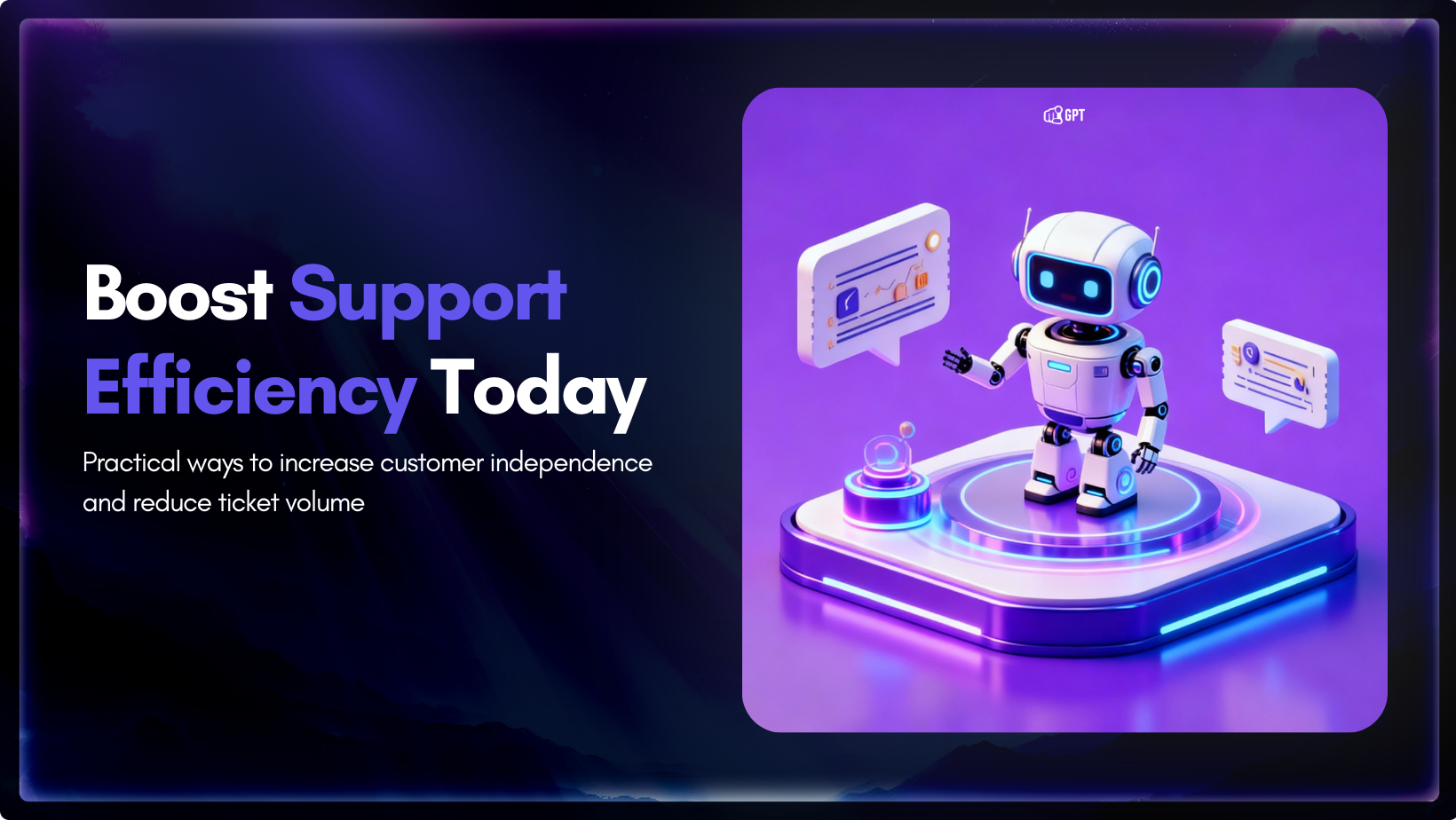
These days, self-service options is the norm for customer support. However, simply having a knowledge base or chatbot is no longer enough. The most important thing is to determine if these tools are effective. Are your customers getting the answers they need? Or are they simply becoming increasingly irate and will eventually contact your support […]


TL;DR An AI chatbot for WooCommerce connects to your store’s database and automatically handles customer questions about orders, inventory, shipping, and returns 24/7. It reduces support tickets by 30-40%, recovers 15-25% of abandoned carts, and answers customers in 100+ languages without requiring human intervention. WooCommerce AI helps when customers leave because they cannot get clarity […]

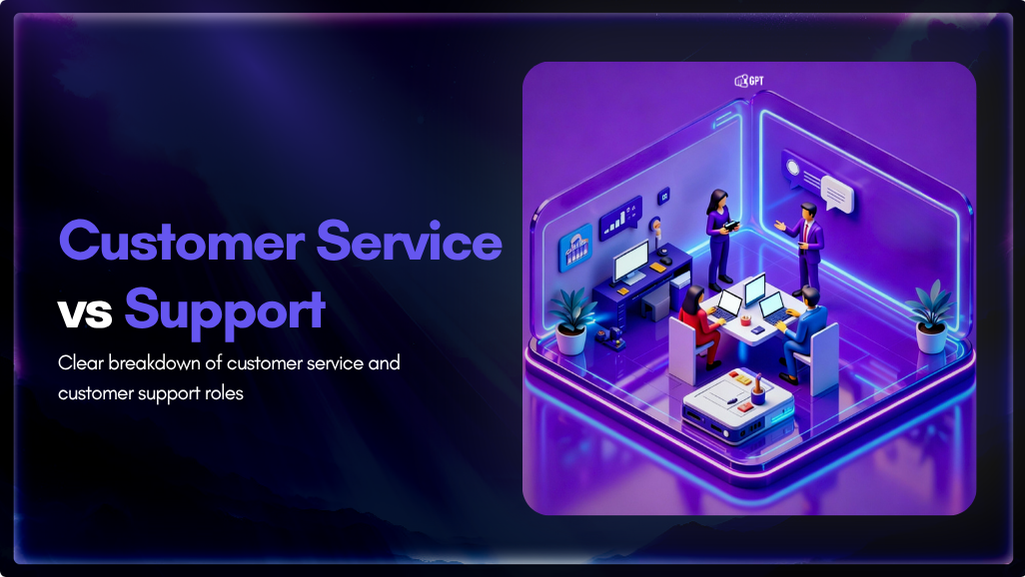
TL;DR Customer service builds relationships, and customer support solves technical issues. When both work together, businesses deliver faster resolutions, higher satisfaction, and stronger customer loyalty. YourGPT automates routine tasks so teams can focus on meaningful customer interactions that create lasting connections. Customer service and customer support are not the same, though most businesses treat them […]

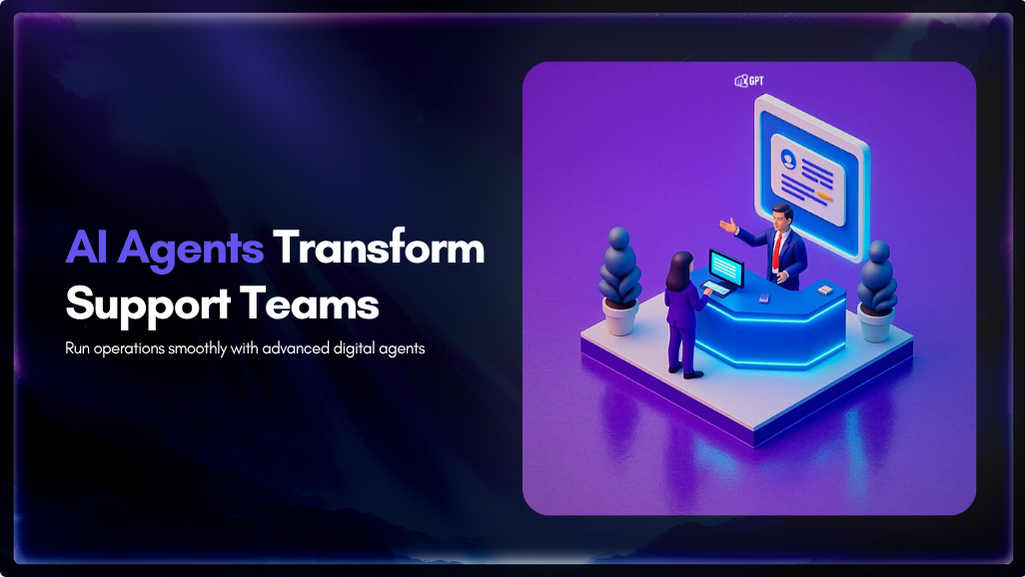
TL;DR Customer Service AI agents now handle most customer queries instantly, work with business systems, and are available all day. They bring context, language support, and clear results—not just lower costs. A customer service AI agent has become a practical solution for modern businesses looking to improve how they help customers. Today’s customers value quick, […]

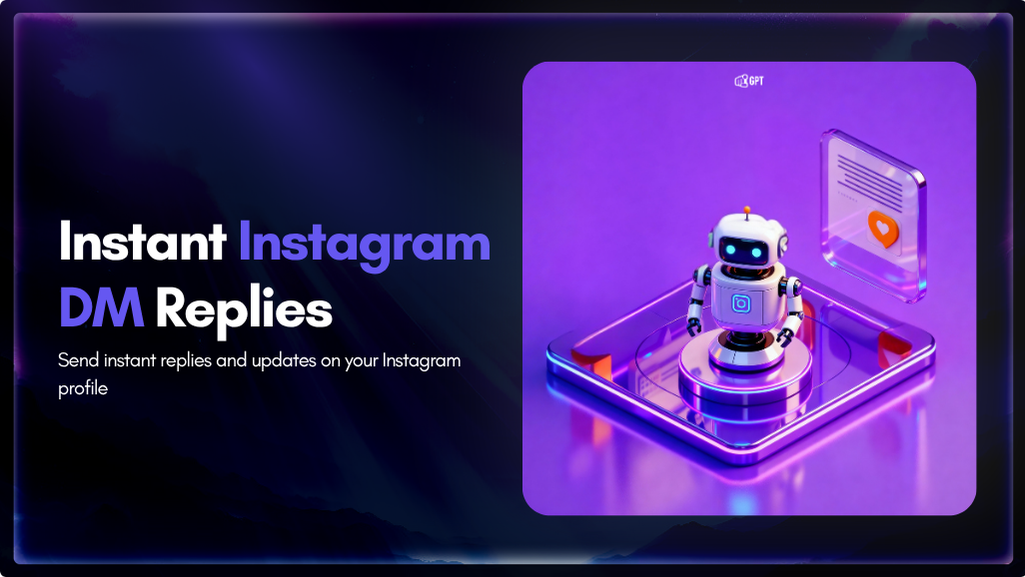
TL;DR Your team can’t keep up once Instagram DMs exceed 50 per day. Response times stretch from minutes to hours. Most messages ask the same questions about shipping, product suggestion, pricing, and returns. AI agents answers these immediately so your team handles complaints, refunds, and complex requests. Setup takes 15 minutes without technical knowledge. Most […]

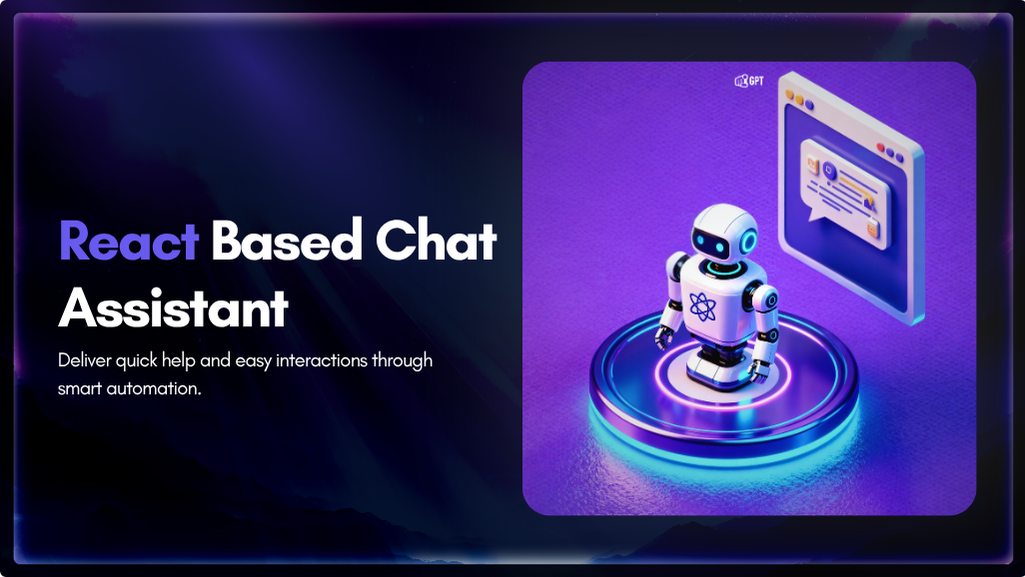
React Native has simplified cross-platform mobile app development, allowing developers to build for both Android and iOS within a unified workflow. As user expectations have changed fast, apps are often required to provide intelligent, context-aware experiences instead of relying solely on visual appeal and smooth navigation. Integrating conversational AI into mobile apps has become essential […]
